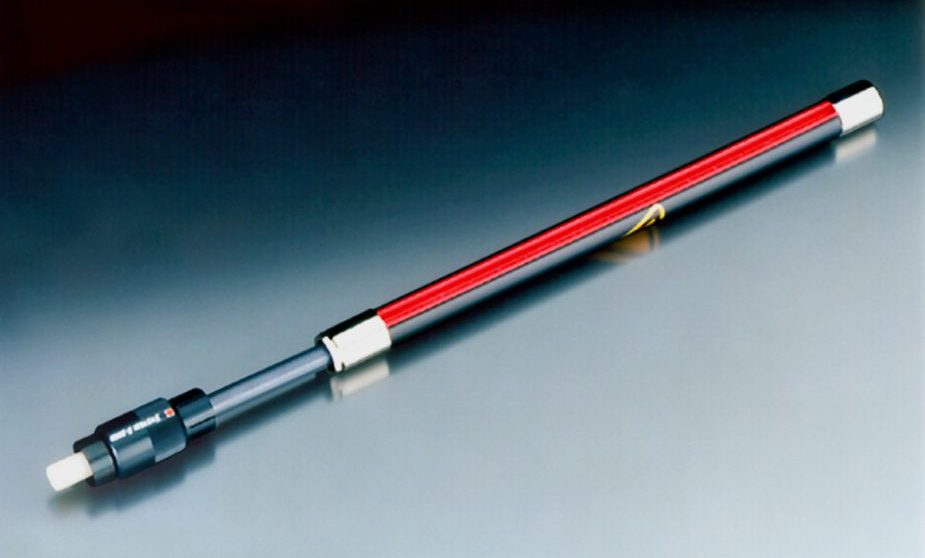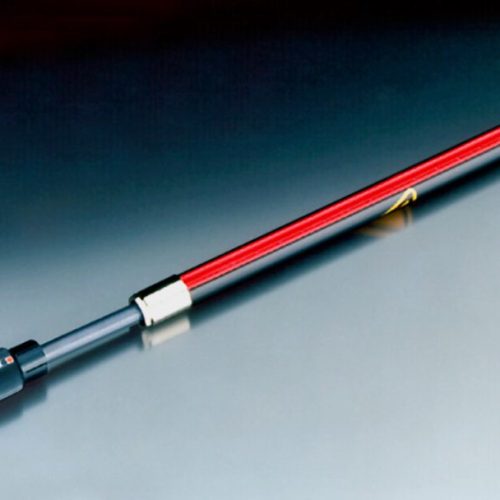Discharge systems (ionizing)
Generalities
They serve to eliminate the electrostatic charge present on dielectric surfaces.
The main industries of application are as follows:
- Plastic film production
- Plastic molding
- Textile industry
- Automatic packing and packaging machines
- Printing industry
- Painting equipment (Ex systems)
Energy is supplied by an AC power supply with a 7,000 V output to which one or more ionizing bars are connected. The bars are arranged near the surface to be treated and by means of the ions they produce eliminate electrostatic charges.
The power supplies contain special transformers and any monitoring systems, and can have 2, 4 or more outputs for as many bars. The rods consist of conductors embedded in resin that, through a capacitive connection, transmit voltage to the ionizing tips. The bar is connected to the power supply by means of a high-voltage cable with special shielding against electromagnetic field leakage. The bars are generally 20 mm in diameter, but there are also bars with a smaller 15×15 mm section. The length of cables and bars can be chosen as desired by the customer, although bars longer than 3 m are generally not made. The bars act up to 50 mm from the surface. There are also Ex-certified bars for use in hazardous environments. All Haug ionizing rods are safe to touch. Importantly, there are commercially available resistive-coupled bars that cannot be touched for safety reasons.
AC current at 7000 V runs through the conductor intemo to the bar. Around the conductor are small solenoids (spirals) that carry the ionizing tips. Conductor and solenoid form a capacitive connection, so a high-voltage but very low amperage current (15 mA) is induced in the solenoid. The potential difference between the tips and the bar housing, made of aluminum, generates an invisible electric arc. It ionizes air molecules by generating both positive and negative ions, the current being alternating. The ions, affecting the electrostatically charged surface, elide its charges, leaving it neutral after passing under the bar. It is important to note that due to the low current intensity it is possible to touch the ionizing tips during their operation without harm.
As for power supplies, their main feature is in the secondary of the transformer, the winding of which is made with a very thin filament that ensures great continuity in the performance of the apparatus.
Available discharge systems
The basic components are:
- a high-voltage power supply
- a discharge bar
- a high-voltage cable
HAUG develops and manufactures ionizing systems for the elimination of electrostatic charges. Decades of experience in the field of ionization guarantee to solve the problems of all our customers.
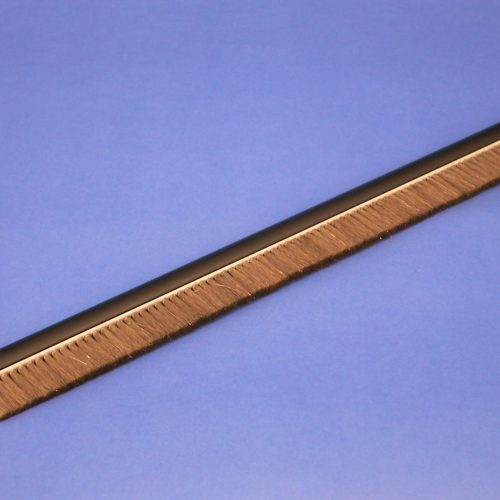
Antistatic brush
The anti-static brush “SAB” is a passive ionizer, that is, it does not require a power supply. It takes advantage of the corona effect to reduce electrostatic charge. The filament is “Thunderon,” a conductive acrylic. The filament is “Thunderon,” a conductive acrylic.
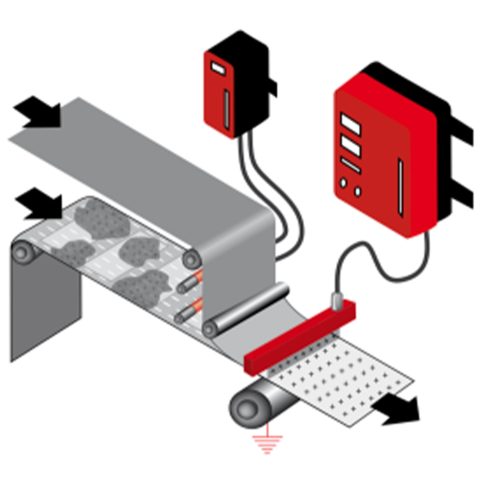
EN-SL and EN-SL LC Feeder
It is the most popular and inexpensive power supply. It provides the voltage of about 7000Vac needed to power the discharge bars.
It has two outputs and a range of about 10mt (sum of the lengths of the connected cables and bars). The power on/off switch is equipped with an indicator light so that the operator can verify that it is on.
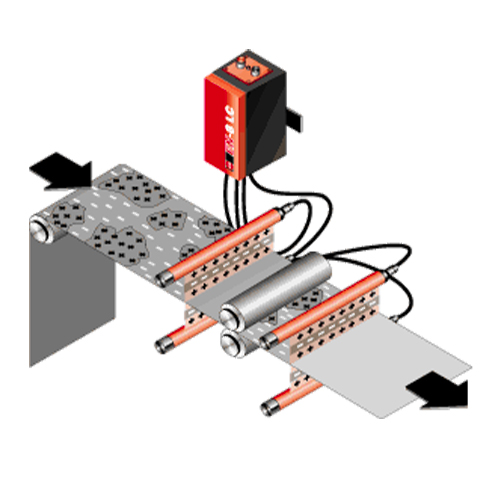
Feeder for 4 bars EN 8 LC
The EN 8 LC Power Supply provides voltage to the discharge bars. The input voltage is raised to about 7000 volts by an internal high-voltage transformer. An LED installed on the cover and connected to the secondary of the transformer, starts flashing if due to a fault the output voltage drops below 4Kvolts
This model has 4 outlets and was built in accordance with protection type IP54, protection class I per DIN 0550.
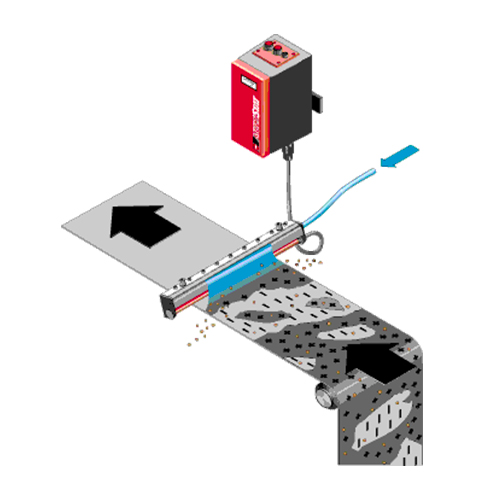
High-performance power supply for 4 discharge bars – MULTISTAT
HAUG’s Multistat power supply is unique in its class. It has all the requirements for a high-voltage power supply. Beyond conventional technical devices, it offers a variety of high-tech features to ensure maximum services to the user. Built with integrated SMD technology electronics, it assists the user in the ever-increasing quality demands.

High Speed Feeder – EN 70 LC
The EN 70 LC feeder is used on high-speed machines and with ionizing bars in tandem versions. Equipped with two transformers working in phase opposition, and four high-voltage outputs each. All electrostatic charges that could disrupt production are completely removed using the HAUG ionization system, even at high operating speeds.
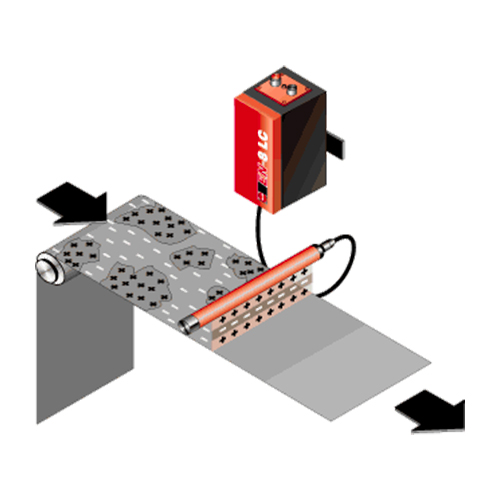
EI-RN Standard Discharge Bar
EI-RN Standard Discharge Bar Its durability and effectiveness has been repeatedly proven hard in eliminating electrostatic charges from all dielectric surfaces. This property has been found to be extremely effective for speeds up to 100mt/minute.

EI PS rectangular-section mini-discharge bar.
Of rectangular cross section (14×16.5mm). Due to the high technology developed by Haug, its capacity is higher than that of other bars having the same size. Its small size allows it to be installed even in places inside the machines that are not easily accessible. The axial or radial cable, always with the patented System X-2000 plug that prevents incidental contact between the operator’s hand and the high-voltage output of the power supply.It does not require any special supports as it is provided with a dorsal groove into which the included mounting screws slide. All the material used is completely recyclable.

EI-VS Triple Capacity Bar.
It removes all electrostatic charges present, and its performance is indeed considerable. The EI VS bar has all the qualities of HAUG electrostatic bars such as the special connector, absolute touch safety, and special steel pins. But its most important feature is that a triple conductor runs inside it, so its electrical capacity is three times more powerful than a standard EI-RN bar. Therefore, when calculating the capacity of a feeder, one must multiply the length of the EI VS bar by three.
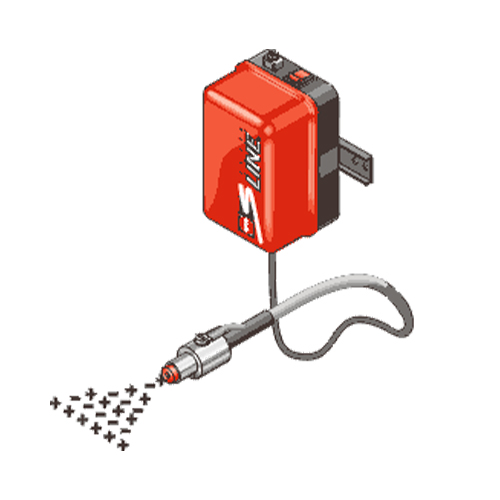
One-Point Ionizer One-Point Ionizer
Haug developed this model to electrostatically discharge smaller components. Its connector screws into the output of the power supply without the need for tools. Regular cleaning of the electrode is recommended, as dirt can reduce its efficiency.
Caution: the tip should not be touched when the power supply is on.
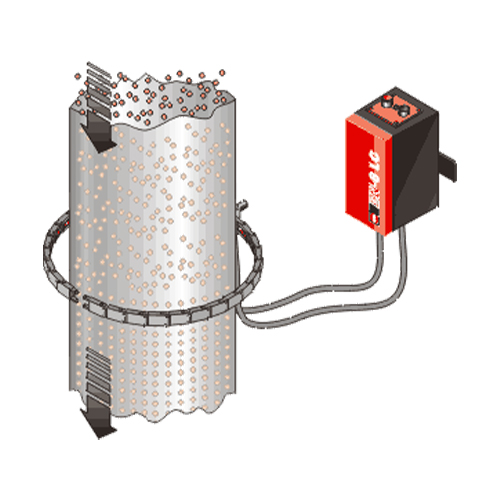
EI-Form Segmented Bar
Due to its special geometry, the EI FORM bar can also be adapted on a curved surface. Particularly used to remove electrostatic charges in the packaging and medical industries, it enables increased treatment efficiency and quality. It is equipped with the special System X-2000 connector that prevents direct contact of the operator’s hand with the high-voltage output of the power supply. The EI FORM bar can be adapted to concave or convex surfaces. Can have up to 20 segments and a curvature with a minimum radius of 135mm
Do you want to request an offer?
Are you interested in receiving more information and being contacted by one of our specialized operators?
Request your offer now

Do you want to request an offer?
Are you interested in receiving more information and being contacted by one of our specialized operators?
Request your offer now
Frequently asked questions
What is electrostatics?
Electrostatics studies stationary electric fields, that is, generated by static charges arranged on dielectric surfaces.
What can be done with electrostatic systems?
One can eliminate the unwanted charge or one can generate a charge.
What is meant by ionization?
It is equivalent to the elimination of electrostatic charge. A bar produces ions that remove charges on the surface.
In what cases should a surface be loaded?
The most typical case is to make one surface adhere to another, making a kind of electrostatic “bonding.”
Are discharge and charge technically different processes?
Yes, a discharge (ionizing) bar generates ions while a charge bar generates a stationary electric field.
If I want to download a movie, can I use one ion bar?
No, since the charges on a dielectric are stationary it is necessary to discharge both faces of the film via two opposing bars.
Why not more simply use an anti-static brush?
This is a good solution to REDUCE the charge, but if you need to ELIMINATE the charge you must use an ionizing bar.
Up to what distance does a discharge bar act?
20-30 mm. However, with the help of appropriate compressed or ventilated air systems, it is possible to reach 500 mm and more.
Are there injury risks in the use of electrostatic systems?
Discharge (ionizing) bars are safe to the touch and do not give any problems (excluding special reported cases). The charge bars, on the other hand, should not be touched during operation; in fact, they should be shielded.
How can I verify the effectiveness of an electrostatic treatment?
Numerous electrostatic charge measurement systems are available in the catalog, but generally the result is seen immediately after treatment.




